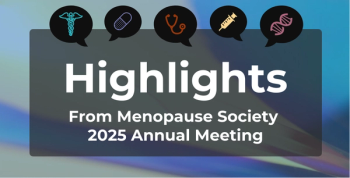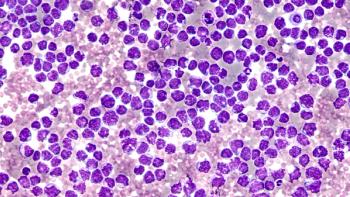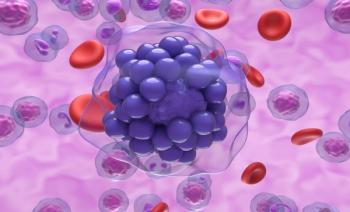
MAHA Report Calls for Whole-of-Government Action to Solve Childhood Health Crisis
Key Takeaways
- The MAHA Commission identifies ultraprocessed foods, chemical exposure, sedentary lifestyles, and overmedicalization as primary drivers of children's health issues.
- The report emphasizes the need for a government-led strategy prioritizing prevention, food quality, and independent research free from corporate influence.
The Make Our Children Healthy Again assessment from the Make America Healthy Again (MAHA) Commission warns of a national childhood health crisis and calls for broad federal reforms.
The
To address this, the report calls for a whole-of-government strategy led by the MAHA Commission, including redirecting policy to focus on prevention, food quality, environmental safety, and independent scientific research. It advocates prioritizing American farmers and whole foods, and supporting "gold-standard" science that is free from corporate interference.
Developed in just over 3 months, the MAHA initiative aims to balance consumer protection and economic interests, particularly regarding the pesticides and chemicals commonly used in agriculture,
The commission is chaired by HHS Secretary Robert F. Kennedy Jr and includes leaders from Management and Budget, Agriculture, Education, the Environmental Protection Agency (EPA), Veterans Affairs, the FDA, and other federal agencies.
Childhood obesity rates have more than tripled since the 1970s, and over 350,000 children are currently diagnosed with diabetes, the report highlights.1 Neurodevelopmental disorders are on the rise, with autism now affecting 1 in 31 children.
While the report outlines the scale of the crisis, with more than 40% of US children having at least 1 chronic health condition, a comprehensive examination of socioeconomic factors and
“They make a great diagnosis and they have a very weak treatment plan,” Philip Landrigan, MD, MSc, professor of pediatrics at Boston College, says in the
Landrigan also expresses concern about the report’s suggestion that possible associations between childhood disease and vaccines have not been thoroughly investigated. Nevertheless, the MAHA commission touts its commitment to tackling these challenges.
“We will end the childhood chronic disease crisis by attacking its root causes head-on—not just managing its symptoms,” Kennedy says in
MAHA Report Outlines 4 Drivers of Children's Health Crisis
The report identifies 4 primary drivers behind this crisis.1 First, the American diet has shifted dramatically toward ultraprocessed foods (UPFs), which now make up nearly 70% of children’s caloric intake. These foods are high in added sugars, refined grains, and synthetic additives, and are strongly linked to obesity, diabetes, and nutritional deficiencies.
Second, children are exposed to more than 40,000 chemicals through food, water, and air—often during critical developmental windows—yet current regulatory systems fail to evaluate the combined risks of these exposures.
Third, children’s increasingly sedentary and screen-focused lifestyles—averaging 9 hours of daily nonschool screen time—are contributing to rising rates of physical inactivity, chronic stress, poor sleep, and declining mental health.
Fourth, the overmedicalization of children has led to a surge in prescriptions for stimulants, antidepressants, antipsychotics, and antibiotics, often without adequate justification. This trend, the report argues, is driven in part by corporate influence on medical research and regulation and may mask the root causes of illness while introducing new risks.
Corporate Capture in Public Health
A major theme of the report is the role of systemic corporate influence, or "corporate capture," in shaping public health policy. It notes that 95% of members on the 2020 Dietary Guidelines Advisory Committee had financial ties to industry, and that the pharmaceutical industry has spent more on federal lobbying than any other sector from 1999 to 2018. Regulatory agencies face a “revolving door” problem, with personnel frequently moving between government and industry roles.
The MAHA Report frames the childhood chronic disease crisis as a national emergency. It warns that if the root causes—industrialized diets, chemical exposures, digital lifestyles, and overmedicalization—are not addressed, the long-term health, economic, and national security consequences will be severe. The report urges immediate and coordinated reforms to ensure the health and resilience of future generations.
References
1. HHS. The MAHA Report: make our children healthy again (assessment). The White House. May 22, 2025. Accessed May 22, 2025.
2. Goldman M. 5 key takeaways from the MAHA Commission report. Axios. May 22, 2025. Accessed May 22, 2025.
3. Stone W. MAHA Commission report paints a dark picture of U.S. children's health. NPR. May 22, 2025. Accessed May 22, 2025.
4. MAHA Commission unveils landmark report exposing root causes of childhood chronic disease crisis. News release. HHS. May 22, 2025. Access May 23, 2025.
Newsletter
Stay ahead of policy, cost, and value—subscribe to AJMC for expert insights at the intersection of clinical care and health economics.













































